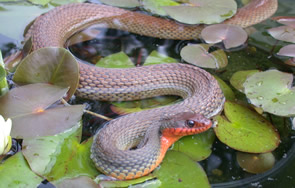
Nerodia erythrogaster
Photo by JD Willson
Description: The redbelly watersnake is easily identified by its unmarked, orange or reddish belly and unmarked, reddish brown to dark brown back. The chin is usually light colored. Juvenile redbellies look very different from the adults as they are boldly marked with series of dark crossbands on the neck and three rows of alternating blotches on the rear part of the body. Like other watersnakes, the tip of the tail is often missing as it is easily broken off. Although they cannot regenerate like lizards, loss of the tail apparently causes them little harm.
Feeding/Diet: These snakes feed on a variety of other animals but mostly eat frogs, toads, and salamanders.
Activity/Behavior: Redbelly watersnakes often bask in the sun during the daytime but at night will travel overland and forage for prey.
Habitat/Range: These snakes are found in and around a variety of aquatic environments including lakes, swamps, and along rivers. Unlike other watersnakes, redbelly watersnakes often travel overland far from permanent water sources.
Reproduction: Redbelly watersnakes mate in the spring, and the females give birth to 6–50 young in early fall.
Miscellaneouis: If threatened or captured, these snakes will vigorously defend themselves by biting repeatedly and smearing the antagonist with foul musk. Like many watersnakes, they are often misidentified as cottonmouths due to their dark coloration and preference for aquatic environments.
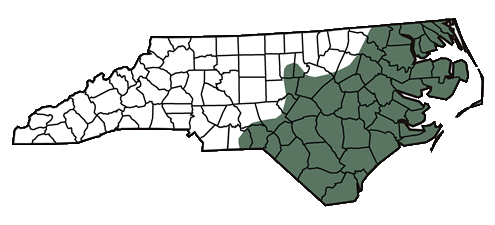
The shaded region represents the range of the redbelly watersnake in North Carolina.
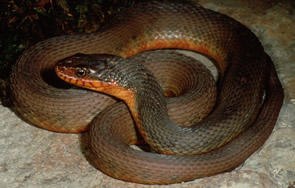
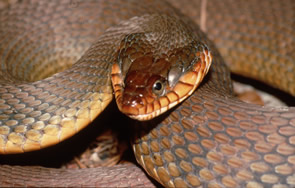
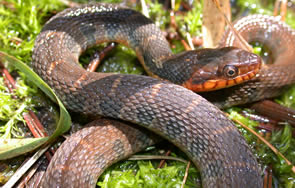
Head spreading is a common defensive mechanism.
Photo by RW Van Devender
Juvenile redbelly watersnake.
Photo by JD Willson
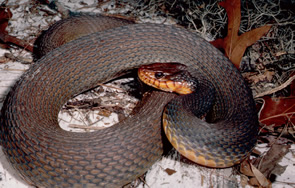
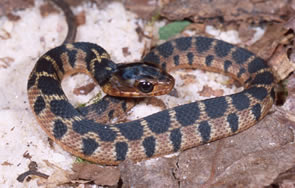

Photo by RW Van Devender
This website created by: J. Willson, Y. Kornilev, W. Anderson, G. Connette and E. Eskew.
For comments or questions contact M. Dorcas: midorcas@davidson.edu.
M. Dorcas homepage: http://bio.davidson.edu/dorcas
Davidson College, Davidson, North Carolina 28035-1719.
Text and maps from: Dorcas, M. E. 2004. A Guide to the Snakes of North Carolina. Davidson College - Herpetology Laboratory, Davidson, NC. – Copyright by Michael E. Dorcas.
Partial Funding for this website provided by a Associate Colleges of the South, National Science Foundation, and Duke Energy.
